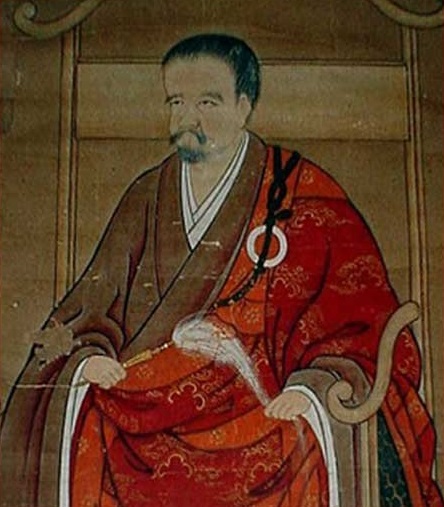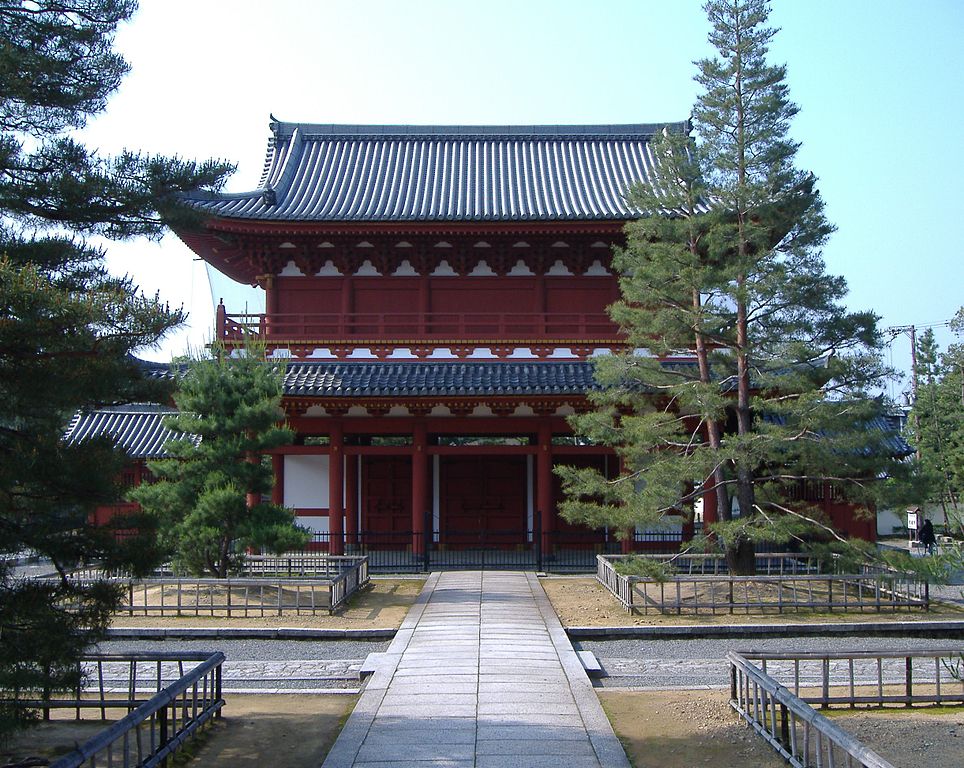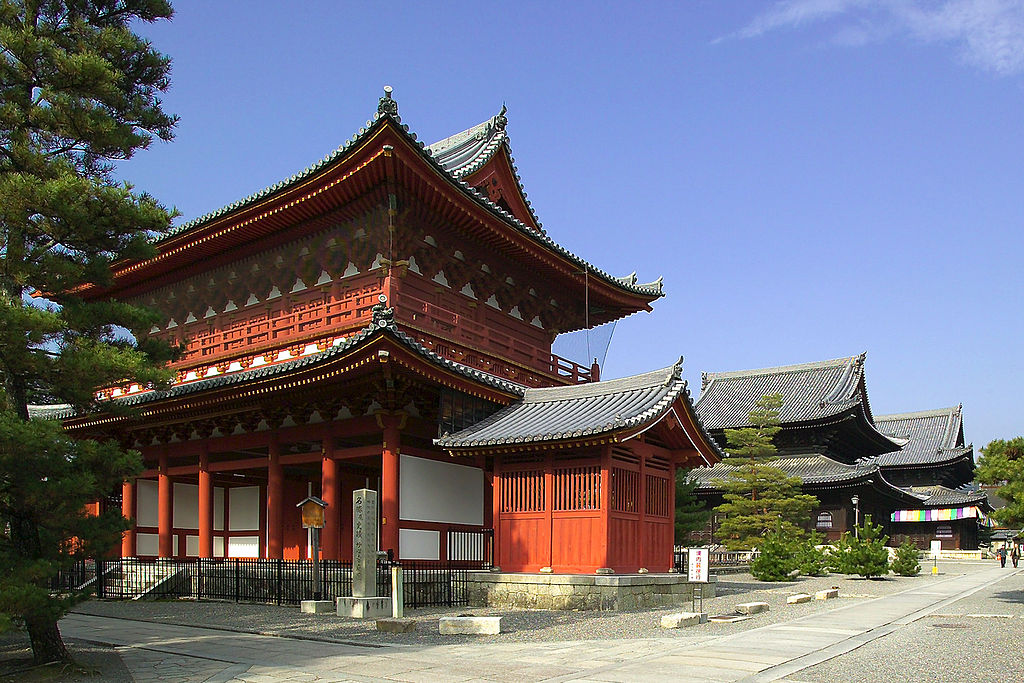It has been said that the three most prominent figures in Japanese Zen Buddhism are Dogen, Bankei, and Hakuin. Both Bankei and Hakuin belonged to the Rinzai Zen lineage, but whereas Hakuin is widely credited with having “reformed” the Rinzai tradition in the 18th century, and is claimed by most contemporary Rinzai teachers as their ancestor, Bankei, who lived in the 17th century, has, by and large, been forgotten. Whenever Hakuin mentions Bankei’s teaching of the Unborn in his writings, it is to harshly criticise it, together with Dogen Zen, as belonging to the “do-nothing Zen,” with priests “spending their lives sitting like wood blocks in the complacent self-absorption of their ‘silent illumination’.”
Writing at the beginning of this century, Norman Waddell says that “renewed interest in Bankei and his teaching has come about only in the last fifty years or so. It is due almost entirely to the efforts of the late Suzuki Daisetz. In a series of classic works published in the early 1940s, Suzuki clarified for the first time the true significance of Bankei’s Zen thought, rescuing Bankei from the obscurity of two and a half centuries of near-total neglect … Bankei’s “Unborn Zen” espoused a fresh departure for the first time since the Zen patriarch Bodhidharma. “Unborn Zen” is truly one of the most original developments in the entire history of Zen thought. Bankei, indeed, must be considered one of the greatest masters that Japan has ever produced.”
Thomas Kasulis agrees that “Bankei’s spiritual attainments were so legion that he was eventually called on to be a major teacher in the great monasteries of both Edo and Kyoto. His insights were profound and his training thorough, yet he preferred to speak in a down-to-earth language understandable to anyone.” He taught for many years in the temples he had built or restored, and, in 1672, at the age of fifty, was appointed the 218th head abbot of the Myoshinji, Rinzai Zen’s main temple, in Kyoto.
Bankei left no written record of his teaching and gave strict orders to his followers that “no one else was to reduce it to writing.” Fortunately, records were made nonetheless. Waddell includes a few of these in his book, mostly dharma talks and dialogues between Bankei and his students.
Bankei’s Journey to Enlightenment

Bankei Yotaku was born in 1622 at Hamada, a small village in what is now the eastern Hyogo prefecture, on Japan’s main island of Honshu. His father, Suga Sosetsu, had moved there with his wife, following his resignation from his post as a physician of samurai rank in the service of the ruling Awa clan. He was therefore a masterless samurai (ronin) and most probably earned a living through the practice of medicine. He died when Bankei was ten. He and his siblings – three brothers and four sisters – were left in the care of his mother and his eldest brother who continued the family tradition as a practitioner of Chinese medicine.
Waddell says that “the records of Bankei’s life reveal that he was an intelligent, highly sensitive child but at the same time rather unruly and uncommonly strong willed.” Education in schools as ever focused on Confucian texts which boys were required to recite over and over. One of the texts the young Bankei had to learn was the Great Learning, one of the “four books” of Confucianism. We are told that when the teacher came to the words “The way of great learning lies in clarifying bright virtue,” Bankei interrupted the teacher, and asked “what is bright virtue?” None of the answers the teacher gave him satisfied Bankei. “He wanted to know what bright virtue meant in terms of his practical experience. This questioning marks the awakening of religious doubt in his consciousness … His questioning of bright virtue soon grew into an all-consuming passion. Fired by unquellable doubts, he embarked upon an urgent and relentless religious quest that would occupy the next fourteen years and determine the future course of his life.”
Confucian scholars to whom he asked this question suggested he try Zen priests, because “they know about such knotty problems.” Unfortunately, there was no Zen temple in the vicinity. Bankei lost all interest in his school work and “wandered about like a stray mountain lamb, aimlessly and alone.” This upset his brother to such an extent that Bankei was finally “banished from the family house for good.”
Waddell writes: “Still only eleven years old, Bankei was on his own … A close friend of the family, taking pity on him, stepped forward and offered him the use of a small hut in the hills behind his house. Accepting the offer, Bankei wrote the words Shugyo-an, or “practice hermitage,” on a plank of wood, propped it up outside the entrance, and settled down in earnest to devote himself to his own clarification of bright virtue.” He may have also studied at a Shin temple, and even lived for a while at a Shingon temple.
The nearest Zen temple was twenty miles away. In 1638, the sixteen year old walked the distance to visit the Zuioji, and meet Umpo Zenjo, the incumbent abbot, and a Rinzai Zen master. According to records, “Umpo had earned a wide reputation as a stern taskmaster who demanded total dedication from his monks … Few were bold-hearted enough to enter his chambers, and they usually fled before long.” When Bankei asked him about “bright virtue,” Umpo replied that if he wanted to find out what it meant, he would have to practice zazen. There and then, Bankei asked Umpo to give him ordination. This is when Bankei received from Umpo the religious name Yotaku, meaning “Long Polishing [of the Mind Gem]. Waddell says that he acquired the name “Bankei” “in his early thirties, when he served a term as a teacher in the training halls of the Myoshin-ji in Kyoto.”
Three years later, Bankei, still looking for an answer, left the Zuioji, and set out on a journey that took him to various parts of Japan, in search of a teacher who could give him a satisfactory reply. At the same time, this “pilgrimage” turned into an intense, even harsh, period of practice. This is how Bankei himself described it: “I pressed myself without mercy, draining myself mentally and physically; at times, I practiced deep in the mountains, in places completely cut off from human contact. I fashioned primitive shelters out of paper, pulled that over me, and did zazen seated inside; sometimes, I would make a small lean-to by putting up two walls of thick paper boards and sit in solitary darkness inside, doing zazen, never lying down to rest even for a moment. Whenever I heard of some teacher whom I thought might be able to give me advice, I went immediately to visit him. I lived that way for several years. There were few places in the country I did not set foot.”
When he returned to the Zuioji after four years, still searching, Umpo said, “‘It’s your desire to find someone that keeps you from your goal’. He was telling Bankei that he would never be able to achieve enlightenment as long as he persisted in searching for an answer outside himself.”
Bankei left again, but this time he stayed in a hermitage he built nearby. And he launched into an even harsher period of practice that weakened him to such an extent that he contracted tuberculosis.
Waddell writes: “As if to underscore his determination to accomplish his end entirely on his own, he isolated himself completely from contact with the outside, walling himself up within his tiny dwelling. He sat constantly, day and night, dedicating himself with even greater urgency to zazen, resolved, just as the Buddha before him had been, not to get up until he had found the way through. Eventually, his buttocks and thighs became inflamed and swollen from constant contact with the bare rock floor. They began to fester. Still he kept sitting. He gave up eating for weeks at a time. He threw cold water over himself whenever he felt even the slightest approach of the “demons of sleep.”
Bankei says that he got to the point when he “could not swallow anything except some thin rice broth.” He was now resigned to dying. Then, Bankei says, “I felt a strange sensation in my throat. I spat against a wall. A mass of black phlegm large as a soapberry rolled down the side … Suddenly, just at that moment … I realized what it was that had escaped me until now: “All things are perfectly resolved in the Unborn.”
Waddell writes: “After fourteen years of incredible hardship, he had achieved a decisive enlightenment, his doubts and uncertainties disappearing like a dream. Immediately, he felt his strength begin to return. His appetite improved almost miraculously and with it, his health.”
Waddell notes that “it has been questioned whether at this point Bankei had arrived at this precise formulation … but this expresses the essential import of Bankei’s realization.” In fact, records indicate that “another enlightenment occurred, occasioned when the fragrant smell of plum blossoms was borne to him on the morning breeze as he was washing his face in a nearby stream.”
Bankei’s Quest for Confirmation
When Bankei told Umpo what had happened, “Umpo was overjoyed. “That is the ‘marrow of Bodhidharma’s bones’. From now on, no one anywhere will be able to touch you,” he said, acknowledging Bankei’s understanding. He told him, however, that he should obtain verification from other masters. Gudo Toshoku, the most highly regarded Rinzai Zen teacher of the day, was the man Umpo recommended.”
Bankei therefore set out to go to the province of Mino, where Gudo’s temple, the Daisenji, was located. Gudo, unfortunately, was away in Edo at the time. Bankei visited a number of Zen teachers in the province, but could not find any who could give him the confirmation he needed. He, however, remained in the area for another year, to engage in the post-enlightenment phase of his training.
Back with Umpo, news reached Bankei of a Chinese priest named Dosha Chogen, who had landed in Nagasaki, and settled at the Sofukuji temple there. During the sakoku (“locked country”) period, all of Japan’s foreign trade with the Portuguese, Dutch, English and Chinese – was carried out through the port of Nagasaki. A large community of Chinese had settled there and built three temples, one for each linguistic region of China.
Waddell writes: “Dosha confirmed Bankei’s enlightenment, with the words “You have penetrated through to the matter of the self.” After having said that, however, he added, “But you still have to clarify the matter beyond, which is the essence of our school.” For Bankei this was “inconceivable.” He felt he had attained full enlightenment. “According to an account in Dosha’s recorded sayings, Bankei looked at Dosha, laughed loudly, and then stalked brusquely out of the room without even making his bows.” Bankei, however, did not leave the temple, and instead watched the way Dosha taught the monks. In the end, he decided to continue his training with Dosha at the Sofukuji.
Bankei could read and write Chinese, but he could not speak it, and Dosha did not speak Japanese. So master and disciple had to communicate through written notes in Chinese. Bankei lived in the monks’ hall with the other students and worked in the kitchen, serving meals to the other monks.
“The following year,” Waddell says, “while sitting in the darkness of the meditation hall with the other monks, Bankei had another enlightenment experience. He left the hall, rushed to Dosha’s chambers, took up a brush and wrote the question “What is the ultimate matter of Zen?” ‘Whose matter?’ Dosha wrote in reply. Dosha extended his arms out. Dosha took up his brush, but before he could write anything, Bankei grabbed it out of his hand and threw it to the floor. He then “swung his sleeves and left.”
Dosha confirmed that Bankei had “completed the great matter” and offered him the position of senior monk. Bankei, however, declined this distinction. In fact, when the other monks learned that Dosha had acknowledged Bankei’s enlightenment, an “undercurrent of resentment erupted into strong feelings of jealousy.” Dosha thought it was best that Bankei leave for a while until matters quieted down. As he could not stay at the Sofukuji, Bankei went back to the Mino province for further post-enlightenment training in a hermitage.
Waddell says that Bankei regarded Dosha, rather than Umpo, as his “true” teacher. He was to return to Nagasaki at a later time, to help Dosha who was being challenged by another Chinese priest, better known by his Japanese name – Ingen – who had landed in Nagasaki with a group of twenty disciples. Bankei tried to defend Dosho, to no avail.
It is said that, in 1653, Bankei knew, through a kind of second sight, that Umpo, now 85, was gravely ill, and set out to the Zuioji temple with a disciple who had doubts about his ability to know this fact. Umpo passed away the night before Bankei reached the Zuioji. Four years later, in accordance to Umpo’s dying wish, Bankei became Umpo’s official dharma heir. This established Bankei’s formal filiation to the main Myoshinji branch of Japan Rinzai Zen. With the Dharma transmission he had received from Dosha, Bankei was already linked directly to Dosha’s line of Chinese Zen.
Having received transmission from Dosha and Umpo, Bankei spent the last part of his life teaching untiringly to both monastics and lay people. Records mention three main temples – the Ryumonji, in his native Hamada, the Nyokoji, at a remote spot in the mountains on the island of Shikoku, and the Korinji, in Edo – as well as forty other sites, he had built or restored. He held periods of Zen training, some as long as two years, for handpicked students, at Nyokoji, completely cut off from the world.

In 1672, at the age of fifty, he was appointed the 218th head abbot of the Myoshinji in Kyoto.
“At the time of his death, Bankei had as personal disciples over four hundred priests and monks and two hundred and seventy nuns, in addition to the more than five thousand men and women of the laity who had received the precepts making them his students. They included people from all over the country, more than a few of whom were daimyo and other men of prominent position and family, as well as many students from the peasant classes.”
In 1693, as he was on his way back from Edo to the Ryumon-ji on an usually hot summer day, “Bankei began to show signs of illness … The following morning, he mentioned to one of his attendants that he would die within two months, but, to avoid causing alarm, he forbade him to tell anyone … Records say that he spent the last days of his life “speaking pleasantly with his disciples. Someone asked if he would compose a death verse, traditional in the Zen school. He replied, ‘I have lived for seventy two years, I’ve been teaching people for forty five. What I’ve been telling you and others every day during that time is all my death verse. I’m not going to make another one now, before I die, just because everyone else does it.’ After speaking those words, he passed away.”
Sources:
Norman Waddell – The Unborn – The Life and Teachings of Zen Master Bankei
Norman Waddell – Wild Ivy – The Spiritual Autobiography of Zen Master Hakuin
Thomas P. Kasulis – Engaged Japanese Philosophy

